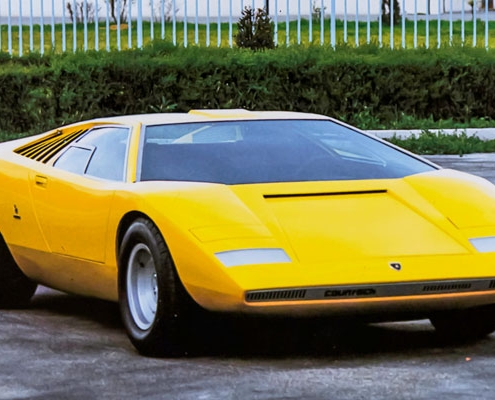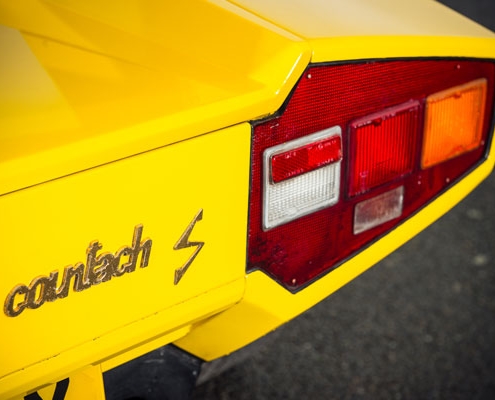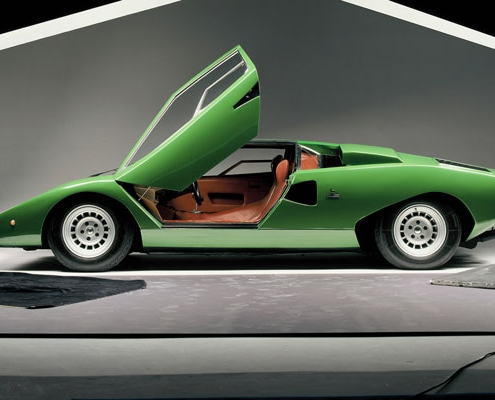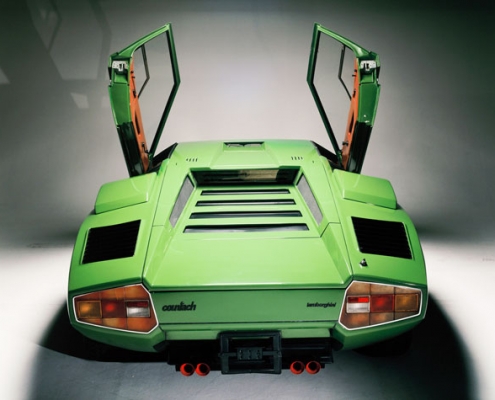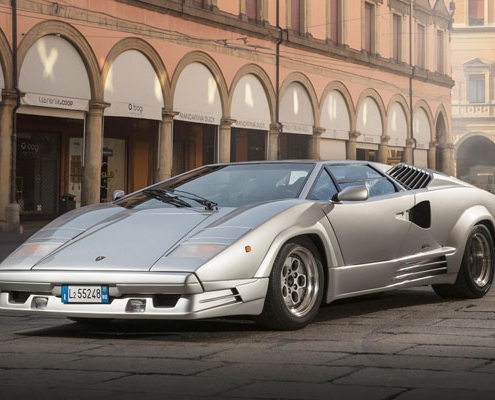Classic Supercar: Lamborghini Countach
For those of us who are approaching, or are already in, that period of our existence when slightly aching joints are a permanent fact of life and hair has, for some unknown and thoroughly unfair evolutionary reason, migrated from the top of our heads to our ears, there is a car that was pretty much the only one that mattered when we were kids.
That car was the Lamborghini Countach. It looked outrageous; was capable, we were certain, of warp speed; and anyone driving it was so incredibly cool as to be some combination of James Bond and Steve McQueen. Its bonkers futuristic styling, together with brutal power and monster performance, made it THE supercar to aspire to own, and posters of the Countach adorned many a teenager’s bedroom wall in the 1970s and ’80s.
The Countach project began when Lamborghini’s founder – Ferruccio Lamborghini – began planning for a suitable replacement for the company’s aging, though still beautiful, Miura model. Keen to maintain the image of the company as being at the forefront of style and technology, the development team included designer Marcello Gandini (responsible for the Miura and early iterations of Bugatti’s EB110) and resulted in the unveiling of the Countach prototype at the Geneva Motor Show in 1971.
That particular car, the LP500, painted in a suitably flamboyant yellow, had the internal company code number of LP112 – where LP indicated the rear longitudinal position (‘Longitudinale Posteriore’ in Italian) of the concept’s massive 5-litre, V12 engine, and was unveiled in Geneva to a rapturous response. The company moved to satisfy the clamour from potential customers and transform the futuristic show car into a production model.
This first incarnation of the production Countach, the LP400, was launched in 1974, and set the standard for all future models. It was low and wide, had the famous scissor doors (the first production car to have them) with huge air ducts sitting just behind them and, in this debut model, had an innovative ‘periscope’ mirror system so drivers could actually see what was going on behind them.
The Countach was trim at 1275kg thanks to the use of materials such as fibreglass and aluminium in its construction, and had independent suspension all round, disc brakes, and sat on 14-inch wheels that were 7.5 inches wide at the front and 9.5 inches wide at the rear.
Inside, the Countach was a smart affair. While Lamborghini had toyed with the idea of digital dash system, analogue gauges were eventually used, and everything was swathed in suede and leather.
Powering the original Countach was not the 5-litre of the LP500 concept but rather Lamborghini’s 4-litre, V12 that developed 276kW and 361Nm of torque. That power was sent through the company’s own five-speed gearbox and was good enough to punt the car to a top speed of 260km/h and a 0-100km/h time of 5.7 seconds – pretty special performance numbers for the time.
Around 150 units of the LP400 were built between 1974 and 1978, and from then on there were updates and modifications that saw a growing number of Countach variations produced, including the LP500S and LP5000 Quattrovalvole of the early and mid-1980s that sported the famous, and massive, rear wing.
The last version of the Countach appeared in 1988, and the 25th Anniversary edition was also the most popular, selling some 650 units. Much modified compared to the original LP400, this version had a restyled body (the handiwork of one Horacio Pagani), improved features (such as electric windows) and a boost in power from a 5.2-litre V12 that developed 335kW and 500Nm. Top speed was now 298km/h and 0-100km/h could be reached in 4.8 seconds.
The Countach was followed in 1990 by the more refined-looking Diablo (although the Diablo was still pretty bonkers), but the Countach continues to a benchmark for supercars – perhaps one of a handful that will be remembered as being truly groundbreaking in that particular niche of the automotive market. Startling in its styling, but with the under-the-skin muscle to move as quickly and aggressively as it looked, the Countach, in all its variations, really was something special.
Source: Motor Trader e-Magazine (April 2021)
13 April 2021





